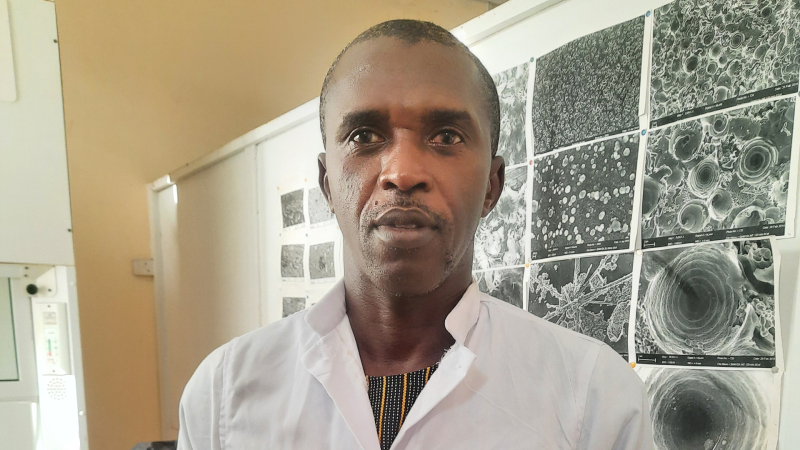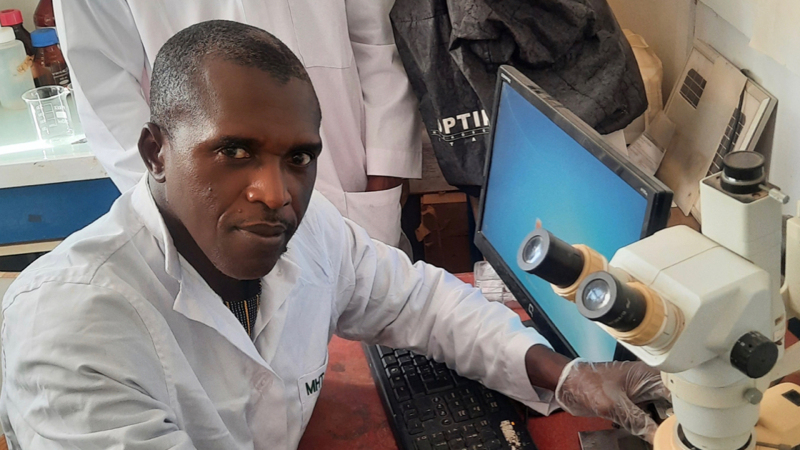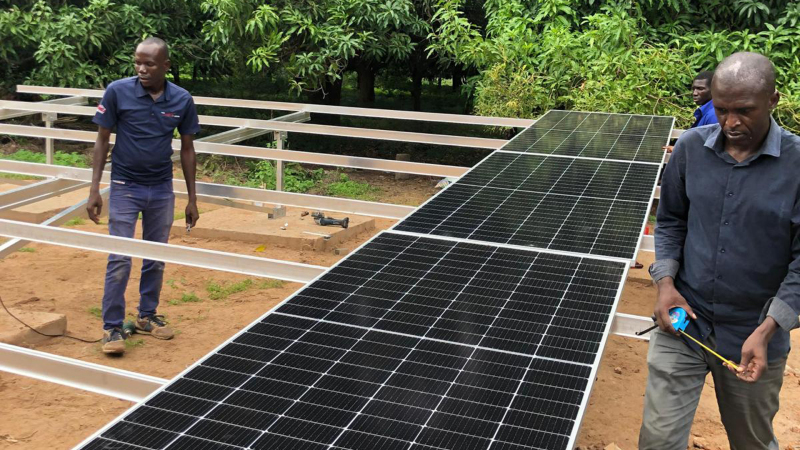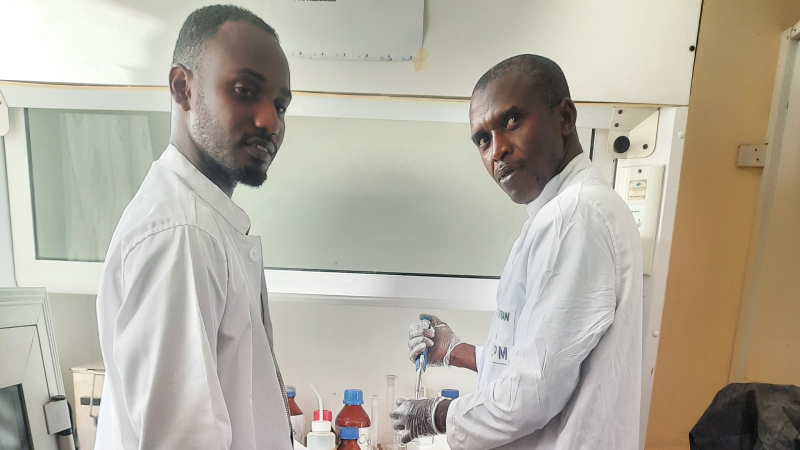Senegalese materials scientist Diouma Kobor is committed to help his country devise new strategies to reduce fossil fuel emissions. Through a Sida-backed TWAS Research Grant covering 2022–2024, he is testing new materials to build inexpensive solar cells and boost a cost-effective technology that converts sunlight into electricity.
Senegal is developing a long-term energy strategy, to reduce fossil fuel emissions and deploy renewable energies by 2030, according to the European Investment Bank. Therefore, all scientific advancements are important.

"My country has a serious problem with energy supply, especially in rural areas where people do not have access to electricity," said Kobor. He is now the Managing Director of the energy group of the Laboratory of Materials Chemistry and Physics, at the University Assane Seck of Ziguinchor, Senegal.
"I decided to dedicate myself to the improvement of solar panels because they are a low-cost option to store energy that can be used to power domestic and public electronic devices," he added.
The Swedish International Development Cooperation Agency (Sida) is an essential supporter of TWAS since 1991. Through the TWAS Research Grants it supports, the Agency helps early-career scientists and groups, especially in the least developed countries, invest in equipment, get published, and train talented young researchers. So far, more than 2,700 Sida grants have supported over 2,000 scientists from 31 LDCs.
The impact of the Sida grant on Kobor's career is noteworthy, as he admitted. "With Sida's support, I am now receiving higher recognition from my colleagues, and new collaboration proposals. Thanks to this grant, I have already published two papers, and attended three international conferences. The most important was the 8th World Conference on Photovoltaic Energy Conversion, which took place in Milan, Italy in September 2022." The grant has also allowed him to mentor a PhD student from Togo, who works on the solar cells project in his lab.
For his innovative inventions, Kobor is the holder of a patent published under the African Organization of Intellectual Property (AOIP), and of two international patents from the World Intellectual Property Organization (WIPO).

The importance of solar cells
Many technologies produce renewable energy from natural sources, and solar cells have numerous advantages. As Kobor explained, they do not pollute and are particularly suitable for rural regions where standard power lines are difficult to install. In addition, they are easy to maintain and can be assembled into bigger solar modules that can even power large structures like hospitals.
In his laboratory, which now has four senior scientists and four PhD students and postdocs, Kobor is testing different materials that can be used to coat the solar cells and work as active light-harvesting layers.
"Thin coating films that allow us to turn light into electricity are normally made with silicon, which is very expensive because it requires crystallization temperatures around 1000°C," Kobor explained. “But we are testing nanoparticles of a perovskite oxide, prepared through a locally produced substrate that is more efficient, and far less costly, under low lighting".
Oxide perovskite nanoparticles in the matrix, he added, can be crystallised and turned into films that are one thousand times thinner than silicon layers, with equal or better performance. His early results are very encouraging.

Due to his experience, Kobor now sits in several African networks such as the African School of Fundamental Physics and the African Light Source Foundation (AfLS). There, he advises on nanomaterials for renewable energy, facilitates interaction among African scientists, and helps them find needed equipment.
"These networks are vital for Africa. The AfLS, in particular, is working to accomplish an important goal: establishing an African synchrotron, a light source that uses electromagnetic radiation to visualize materials and living tissues, to understand their atomic structure," Kobor said.
Protecting science through patents
Besides testing different materials for low-cost solar cells, Kobor has come up with technical breakthroughs for which he has requested, and obtained, intellectual property protection, namely a patent.
With OAPI, he has already patented a small-size solar unit that provides a renewable energy supply. Ideally, this device will be used to power electric trains at railway substations, as well as charging stations for electric cars, airports, agricultural farms, and villages.
He hopes that this invention will soon allow building ultra-fast electric charging stations, which are the first step leading to the renewal of the fleet of African railway locomotives. "In the near future, our trains might function with solar energy only, with a considerable reduction of their environmental impact," Kobor explained.

In addition, he obtained two international patents with WIPO. The first one is focused on a very innovative procedure to obtain ultra-thin silicon coating to further improve solar light absorption. The second one is about building an inorganic coating of perovskite particles, to make solar cells for indoor applications. For example, using the feeble light produced by a low-energy home light bulb to recharge a solar cell, effectively recycling energy used to produce the artificial light.
"The idea behind the latter patent is really a breakthrough one. Using very thin particles of perovskite to obtain highly-efficient solar cells we might recharge the cells directly at home, using the kitchen light as a source of energy, and creating a virtuous mechanism of circular economy," Kobor explained.
Applications range from domestic use to medical purposes. These new-concept solar panels, in fact, are already easing doctors' mobility across the country, said Kobor. By equipping the cars with rechargeable sources of electricity, doctors may now reach rural villages and conduct x-rays and other imaging analyses even in areas without electricity.
Cristina Serra

